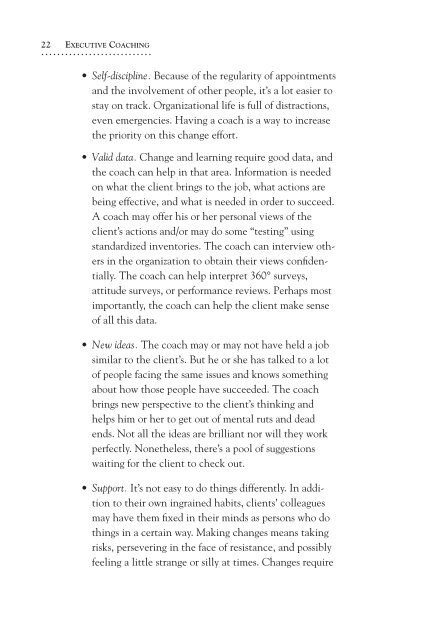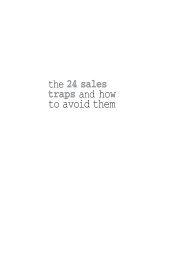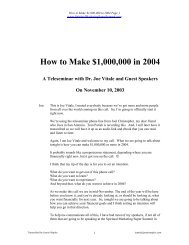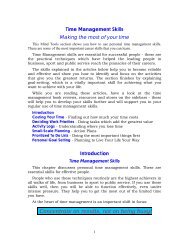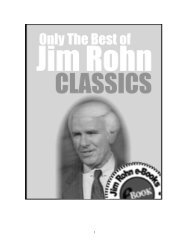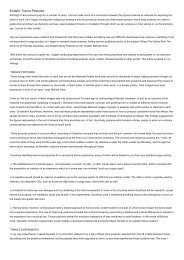Executive Coaching - A Guide For The HR Professional.pdf
Executive Coaching - A Guide For The HR Professional.pdf
Executive Coaching - A Guide For The HR Professional.pdf
Create successful ePaper yourself
Turn your PDF publications into a flip-book with our unique Google optimized e-Paper software.
22 EXECUTIVE COACHING<br />
............................<br />
• Self-discipline. Because of the regularity of appointments<br />
and the involvement of other people, it’s a lot easier to<br />
stay on track. Organizational life is full of distractions,<br />
even emergencies. Having a coach is a way to increase<br />
the priority on this change effort.<br />
• Valid data. Change and learning require good data, and<br />
the coach can help in that area. Information is needed<br />
on what the client brings to the job, what actions are<br />
being effective, and what is needed in order to succeed.<br />
A coach may offer his or her personal views of the<br />
client’s actions and/or may do some “testing” using<br />
standardized inventories. <strong>The</strong> coach can interview others<br />
in the organization to obtain their views confidentially.<br />
<strong>The</strong> coach can help interpret 360° surveys,<br />
attitude surveys, or performance reviews. Perhaps most<br />
importantly, the coach can help the client make sense<br />
of all this data.<br />
• New ideas. <strong>The</strong> coach may or may not have held a job<br />
similar to the client’s. But he or she has talked to a lot<br />
of people facing the same issues and knows something<br />
about how those people have succeeded. <strong>The</strong> coach<br />
brings new perspective to the client’s thinking and<br />
helps him or her to get out of mental ruts and dead<br />
ends. Not all the ideas are brilliant nor will they work<br />
perfectly. Nonetheless, there’s a pool of suggestions<br />
waiting for the client to check out.<br />
• Support. It’s not easy to do things differently. In addition<br />
to their own ingrained habits, clients’ colleagues<br />
may have them fixed in their minds as persons who do<br />
things in a certain way. Making changes means taking<br />
risks, persevering in the face of resistance, and possibly<br />
feeling a little strange or silly at times. Changes require


